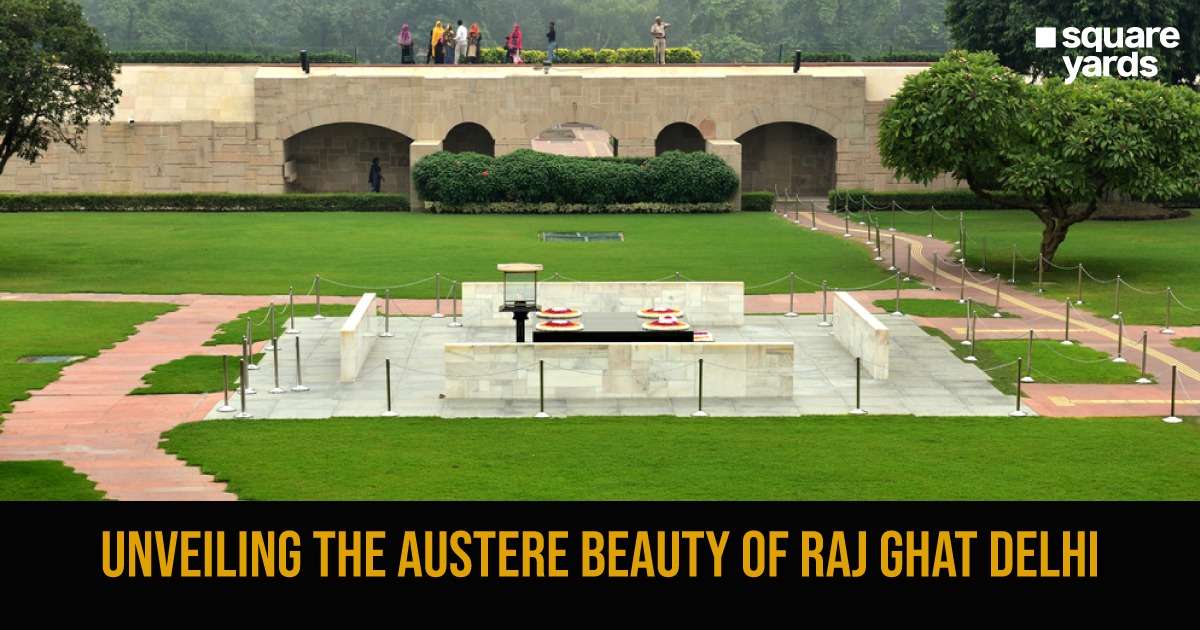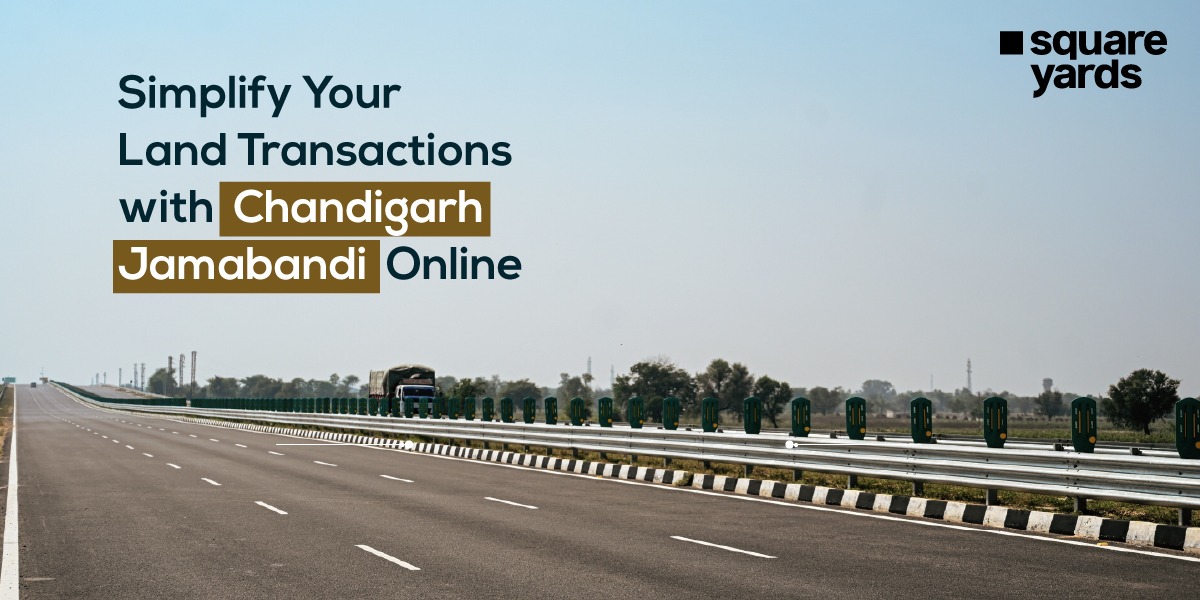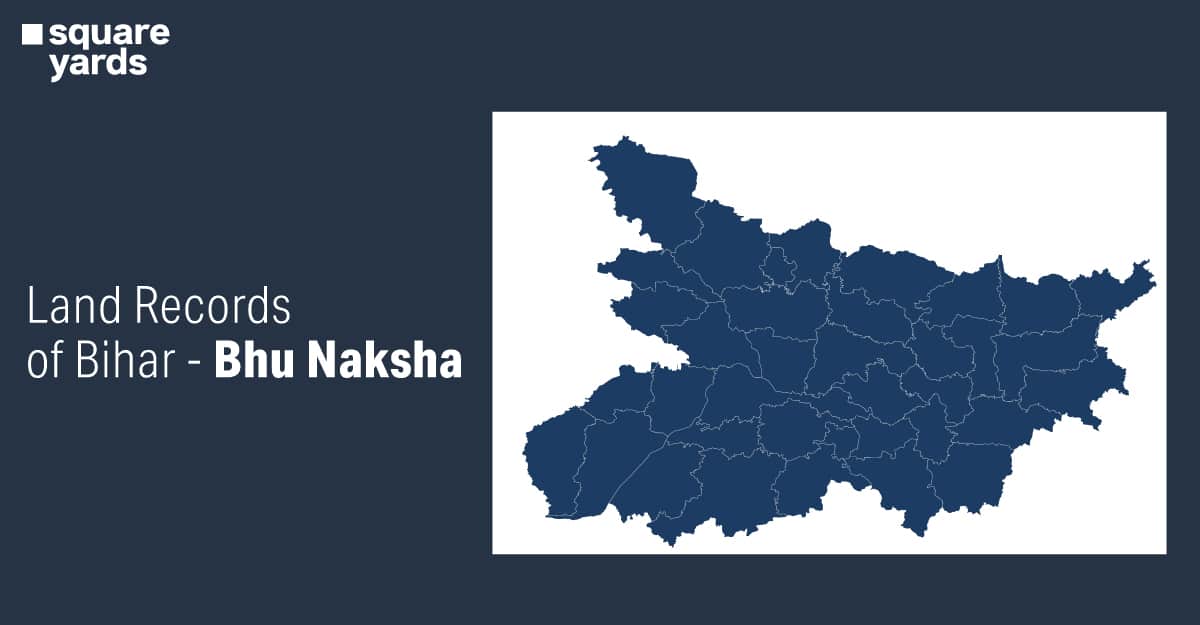“Happiness is when what you think, what you say, and what you do are in harmony.”- Mahatma Gandhi.
Mohandas Karmachand Gandhi, aka Mahatma Gandhi, was one of the most influential leaders in world history. He introduced the idea of non-violence or Ahimsa and fought for the country’s independence and upliftment with his eccentric ideologies. After his untimely assassination in 1948, he left an indelible mark forever etched in the hearts of everyone.
Perched on the banks of the Yamuna River, Raj Ghat is a serene and sacred site that marks where the Father of the Nation was cremated. The site’s allure lies in its commemorative purpose and simplistic and graceful design, reflecting the essence of Gandhiji’s principles.
Want to explore more on Raj Ghat’s history, architecture, facts, and details? Keep reading the blog below:-
Table of contents
- History Of Raj Ghat- Honouring Mahatma Gandhi
- Architectural Design Of The Raj Ghat- Simplicity With Symbolism
- What’s Inside Raj Ghat? Exploring Its Essence
- Political Significance Of The Raj Ghat, Delhi
- Timings And Entry Fees For Raj Ghat
- Ways To Reach Raj Ghat
- What Are The Best Times To Visit Raj Ghat?
- Raj Ghat Location and Nearby Popular Attractions
- Interesting Facts about Raj Ghat
- A Beacon of Inspiration!
History Of Raj Ghat- Honouring Mahatma Gandhi
The tale of Raj Ghat commences with the life and ideals of Mohandas Karamchand Gandhi, affectionately addressed as Mahatma Gandhi. Tragically, he was assassinated on January 30, 1948, and was cremated along the banks of the Yamuna River. The Indian Government built the memorial, and the chosen setting, a tranquil garden with fountains and lush trees nestled on the river’s banks, was officially designated as Raj Ghat.
This poignant memorial complex was formally inaugurated on January 31, 1950, two years after Gandhi’s untimely demise. The black marble platform takes centre stage within this memorial, signifying the very spot where his cremation took place. This simple yet evocative structure is a tribute to his life’s teachings of truth, modesty, and nonviolence.
Architectural Design Of The Raj Ghat- Simplicity With Symbolism
The architectural design of Raj Ghat harmoniously reflects the values that Gandhi ardently espoused – an embodiment of simplicity, humility, and inclusivity. At the heart of the space lies a black granite platform engraved with the parting words of Gandhiji, “Hey Ram”. The open-to-sky platform with an eternal flame endures his timeless legacy.
The meticulous design of Raj Ghat was crafted by American-trained architect Vanu G Bhuta, seeking the influence of the mandala’s pattern for this memorial. The samadhi, or memorial, is placed at the nucleus of a sunken square courtyard connected with four ramps, stretching out towards each cardinal direction.
Enveloping this central sanctum are the landscaped gardens that create a peaceful backdrop. Here, the garden features labelled trees planted by esteemed personalities worldwide, such as Queen Elizabeth II, USA President Dwight D. Eisenhower, Vietnamese leader Ho Chi Minh, and many others.
What’s Inside Raj Ghat? Exploring Its Essence
The National Gandhi Museum, also called the Gandhi Memorial Museum, nestled within Raj Ghat, serves as a respectful homage to the life of Mahatma Gandhi. A simple museum within the complex houses artefacts, photographs, and documents from Gandhi’s life. Among the exhibits, one encounters 23 skillfully crafted models of charkhas, or spinning wheels, embodying Gandhiji’s ideology.
Also, a display of his personal items and an audio-visual section showcases his works and enlightening journey. The film show timings span from 4:00 pm to 5:00 pm every Saturday and Sunday.
Political Significance Of The Raj Ghat, Delhi
Today, Raj Ghat holds unparalleled political significance in India’s history. This peaceful sanctuary of Mahatma Gandhi illuminates the guiding principles- unity and social equality that steered the nation’s arduous journey towards freedom.
VIPs, foreign dignitaries, and travellers representing diverse nations pay homage to the soul of Gandhiji by laying flowers on the platform.
The unadorned ambience of the entire memorial precinct echoes the essence of Mahatma Gandhi’s philosophy. In alignment with his ideals, a weekly khadi spinning program and an all-faith prayer gathering, known as sarva dharma prarthana, grace this space every Friday. In addition, these rituals are held on Gandhiji’s birth anniversary, observed on October 2 and on his martyrdom day, commemorated on January 30.
Timings And Entry Fees For Raj Ghat
Raj Ghat is open to visitors throughout the year. No entry fee or camera charge is imposed on any visitors, making it accessible to all.
Ways To Reach Raj Ghat
- Raj Ghat is situated in the bustling capital of Delhi, which has one of Asia’s largest international airports, linking it with other international destinations.
- The city offers various public transportation modes to reach Raj Ghat conveniently.
- One of the most efficient ways is to take the metro. The nearest metro stations to the Raj Ghat location are – Delhi Gate, ITO, and Indraprastha Metro Station.
- Also, you can opt for cabs, buses or autos that link to the memorial while enjoying the vibrant scenery of Delhi’s culture and heritage.
- The roads and pathways leading to Raj Ghat are well-maintained, ensuring a hassle-free journey.
What Are The Best Times To Visit Raj Ghat?
To make the most of your visit to this symbolic site, it is advisable to consider the weather and seasonal conditions. Summer in Delhi can be hot and humid, leading to discomfort and dehydration. Monsoon season, characterised by heavy rains, may hinder outdoor sightseeing.
Therefore, the ideal time to visit Raj Ghat is during the winter season spanning from October to March. The weather during this period is pleasant, with clear skies conducive to sightseeing. Additionally, plan your visit around the anniversary of any leaders whose memorials are at Raj Ghat. In that case, you may witness special commemorations and pay your tribute alongside others.
Raj Ghat Location and Nearby Popular Attractions
Raj Ghat is on the Mahatma Gandhi Road, near the Ring Road, Delhi.
- Red Fort is around 2.1 km away.
- Jama Masjid is 2.5 km away
- The National Museum of Natural History is approximately 3.7 km distance away.
- Agrasen ki Baoli is 3.7 km
- The Shopping Hub Connaught Place is 4.2 km away
- Mesmerising Jantar Mantar is around 4.4 km away.
- The distance from Raj Ghat to India Gate is 5.3 km
- Rashtrapati Bhavan is 6.8 km away.
Interesting Facts about Raj Ghat
Let’s look at some interesting facts about Raj Ghat, Delhi.
- Raj Ghat is a memorial dedicated to Mahatma Gandhi that pays homage to his teachings and holds unique political significance.
- The open-to-sky platform is enveloped by lush gardens that encapsulate his modesty and down-to-earth nature.
- An eternal flame is burning continuously at one end of the memorial to honour Gandhiji’s memory.
- World leaders and dignitaries, such as Queen Elizabeth, Barack Obama, and Shinzo Abe, have visited Raj Ghat and planted trees in the memorial garden.
- The site holds commemorative ceremonies and events throughout the year, particularly on Gandhiji’s birth anniversary (October 2) and Martyrs’ Day (January 30).
- In the vicinity of Raj Ghat, there are several other important landmarks, including Shanti Van, the monument dedicated to Jawaharlal Nehru, located to the north of the site and Vijay Ghat, the resting place of Lal Bahadur Shastri.
- Visitors to Raj Ghat can access the memorial through a peaceful stone pathway on either side, adorned with enchanting gardens and trees.
- Along the pathway leading to Raj Ghat is a wall decorated with inspiring quotes by Mahatma Gandhi.
A Beacon of Inspiration!
Visiting Raj Ghat evokes a feeling of cultural, historical and spiritual value. Gandhiji’s timeless ideals and simplicity are reflected in the memorial’s design, seeking compassion and harmony. As one walks through the garden pathways and takes in the serene environment, there is a deep reverence and inspiration. Let’s embrace the spirit of equality and strive for a better future.
Frequently Asked Questions(FAQ’S)
Where is Raj Ghat located?
Raj Ghat is situated in Delhi, India, nestled along the tranquil banks of the Yamuna River.
What is Raj Ghat famous for?
Raj Ghat is a memorial of Mahatma Gandhi, where his last rites were performed and designed on the principles of modesty and truth. The serene ambience and the eternal flame embody his true legacy.
How to visit Raj Ghat?
To visit Raj Ghat, you have several options, from buses, metros, or taxis. The nearest metro station is Indraprastha Metro Station, where you can take a short taxi ride to reach the memorial.
Is Raj Ghat in UNESCO World Heritage site?
Raj Ghat is not designated as a UNESCO World Heritage site.
How much time does it take to visit Raj Ghat?
It takes approximately 1 to 2 hours to explore the memorial and museum at RajGhat.
Which Metro station is near Raj Ghat?
The nearest metro station to Raj Ghat is Delhi Gate and Indraprastha Metro Station.
Who designed Raj Ghat in Delhi?
The architectural design of Raj Ghat was created by Vanu G Bhuta, an architect trained in the United States.










































